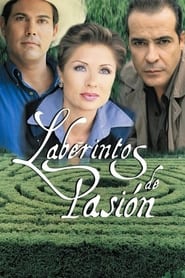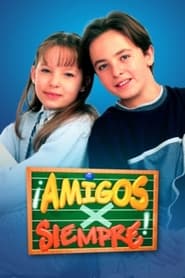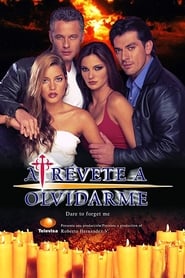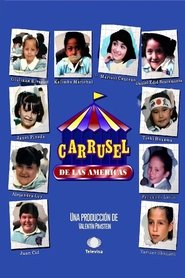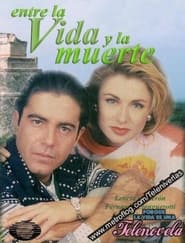Las Estrellas TV Series - Page 14
-
La doble vida de Estela Carrillo
2017
star 7.5After witnessing a murder, single mother Estela Carrillo must hide the fact that she is an undocumented immigrant escaping a dark past. While hiding her secret, romantic interests and her dream of becoming a singer complicate her plans. -
La jaula de oro
1997
star 8Álex Moncada is a screenwriter from the United States who married a woman named Carolina Valtierra. However, a few days after her wedding, Carolina passes away in strange circumstances. Shortly after, Álex is wrongly accused of the murder of a woman during a trip and imprisoned for it, but manages to escape from prison thanks to a fire. Álex decides to investigate the death of his wife to discover her real murderer. To do this, he decides to contact Carolina's family; among them is Oriana, his twin sister. -
Labyrinth of Passion
1999
star 7.2Laberintos de pasión is a Mexican telenovela produced by Televisa in 1999. Starring Leticia Calderon, Francisco Gattorno, César Évora, in addition to the participation of Manuel Ojeda, Monika Sanchez and Azela Robinson. -
Alcanzar una estrella II
1991
Alcanzar Una Estrella II is a telenovela produced by Televisa in 1991. It is the sequel to Alcanzar Una Estrella. -
Contra viento y marea
2005
star 7.2Contra viento y marea is a Mexican telenovela aired from April 25 until November 4, 2005. This was also the last acting role of Beatriz Sheridan, who died in 2006 of a heart attack. -
Luz Clarita
1996
star 6Luz Clarita is a Mexican telenovela produced by Televisa that aired on Canal de las Estrellas in 1996. The series, a remake of Andrea Celeste and Chispita, stars Verónica Merchant and César Évora, as well as child actors Daniela Luján and Ximena Sariñana. It has a dual storyline intended to attract both children and adults. -
Golpe de Suerte
2023
star 8.8"Golpe de Suerte" tells the lives of three families from different social classes. First there are the Pérez Flores, who live in Neza and are made up of Ignacio, Julia and their children Ronaldo and Wendy. The second family is made up of Miranda Ortiz and her little son Diego; They live in the Roma neighborhood in the house of César Traven, a generous elderly antiques dealer. And finally there are Brenda Uriarte, her brother Tony, her stepmother Constanza and her stepsister Sabrina, an upper middle class family. Each of these families will experience a radical change in their lives the day they win two hundred million pesos. -
Amada enemiga
1997
Amada enemiga
1997
Amada Enemiga is 1997 Mexican telenovela, starring Dominika Paleta, Susana Dosamantes and Enrique Ibáñez. It was produced by Televisa. This telenovela contained 80 episodes. -
Friends 4 Ever
2000
star 6.5The story is set at a prestigious, but rigid and repressive school called Instituto Vidal. Its strict owner, Julia Vidal, was once kind but has now turned into a bitter woman following the death of her husband and her daughter, Lauriel. Her granddaughter, Ana, a very sweet and intelligent 10 year old, also has been affected by the death: She has been rendered virtually speechless by the trauma, though she expresses herself through music and possesses an extraordinary ability to move objects with her mind. Ana's unscrupulous father, Francisco Capistrán, however, has taken advantage of the situation to try to steal Julia's school. The timely arrival of Ana's uncle, Salvador, Amanda and her adopted son changes everything. Ana’s sad and lonely life takes an unexpected turn for the better and she regains her joy in a series of adventures bursting with humor, excitement, music and thrilling surprises. -
Niña Amada Mía
2003
star 7.2Niña... Amada Mia is a telenovela that premiered in 2003. It is a production of Angelli Nesma and the protagonists are Sergio Goyri and Karyme Lozano. Premiered in other countries, like in Greece in 2004 with the title 'Νίνα'. by repeating the 2005 and 2006. -
El Amor no Tiene Precio
2005
El amor no tiene precio is an American telenovela. It aired in 2005 until the series finale in 2006. -
Fugitivas, en busca de la libertad
2024
star 7.5Lorena, Frida, Lisset and Montse, four friends who are in prison serving a sentence. One of them is accused unjustly. In the prison where they are held there is a massive escape and they escape. After their escape, the fugitives take refuge in a bar looking for the opportunity to start a new life. -
S.O.S. me estoy enamorando
2021
star 7.6Alberto falls in love with the daughter of one of the men who wants to close the printing press that his family has run for generations. Although his love is immense, saving the business -
Atrévete a Olvidarme
2001
star 6.6Atrévete a Olvidarme is a short-lived Mexican telenovela. Running for only one month in 2001, the program starred Adriana Fonseca and Jorge Salinas. -
Carousel of the Americas
1992
star 8.5This educating soap opera for children takes place at the 500th anniversary of America's Discovery. Some episodes are dedicated to some discoverers and historical personalities. Others are dedicated to historical events. This soap have as end to teach all the children of America the common roots of their origins. -
I love you, Güero
2020
star 7.7“La mexicana y el güero” is the story of some scammers who try to deceive a millionaire who is looking for his biological mother through a plan that is funny about what is complicated. Itatí Cantoral, Gala Montes, Juan Soler, Luis Roberto Guzmán, Montserrat Marañón, Jacqueline Andere, Rodrigo Abed and Laura Vignatti, among many other stars.



